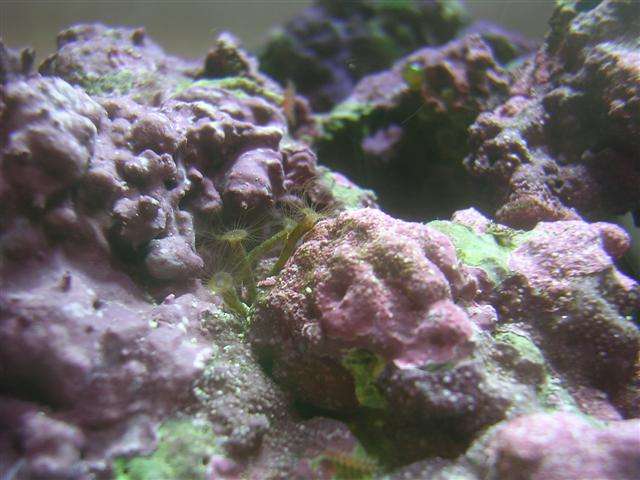Now I am aware that these are not typically dangerous in our tanks, but perhaps more of nousiance. But in some cases if left unchecked they can reach epic proportions. I just wanted to start a discussion about different hydroids and toxic sponges that maybe found in our aquariums and what we can do to rid them of our tanks. I myself am not an expert in dealing with these but I know of a few. The Brown Hydroids resemble a small feather duster, with a small brown tube and a brownish to greenish polyps. They have a pretty potent sting for corals, and if they encroach on a coral they may kill it off. I haven't found a way to erradicate them from a tank yet.

this image was borrowed from nano-reef c est ma
The other hydroid I am familar with is the digita hydroid. These have a spagetti worm like tentacle with little fuzzy bump on it. They sway around in the current. They also have a nice sting to some corals in the tank. Some good insight on these from Melev although I can't find it from the Id page I can only find it with the search function. But that might be that I'm not very smart or something.

this image was borrowed from nano-reef c est ma
The other hydroid I am familar with is the digita hydroid. These have a spagetti worm like tentacle with little fuzzy bump on it. They sway around in the current. They also have a nice sting to some corals in the tank. Some good insight on these from Melev although I can't find it from the Id page I can only find it with the search function. But that might be that I'm not very smart or something.

